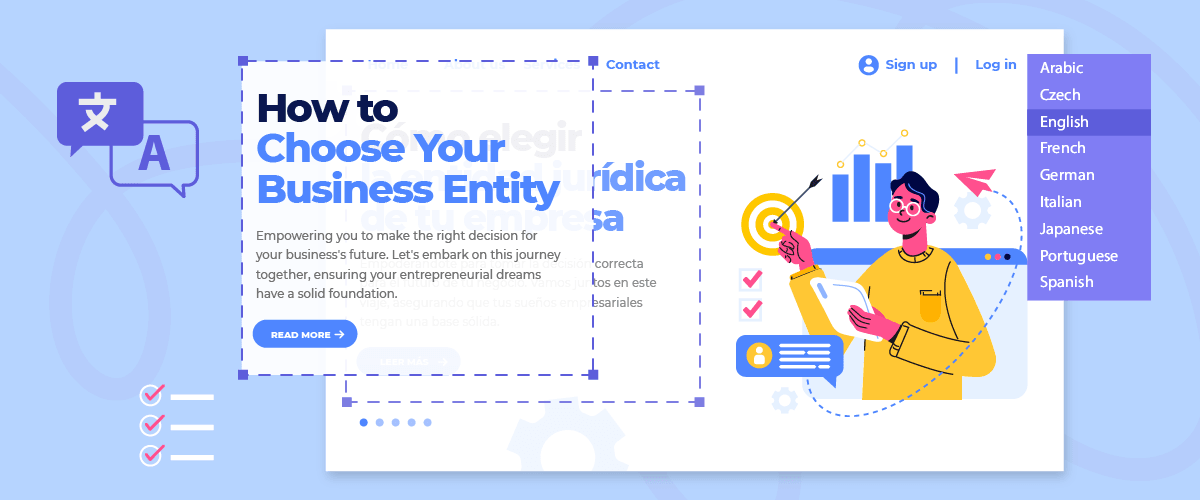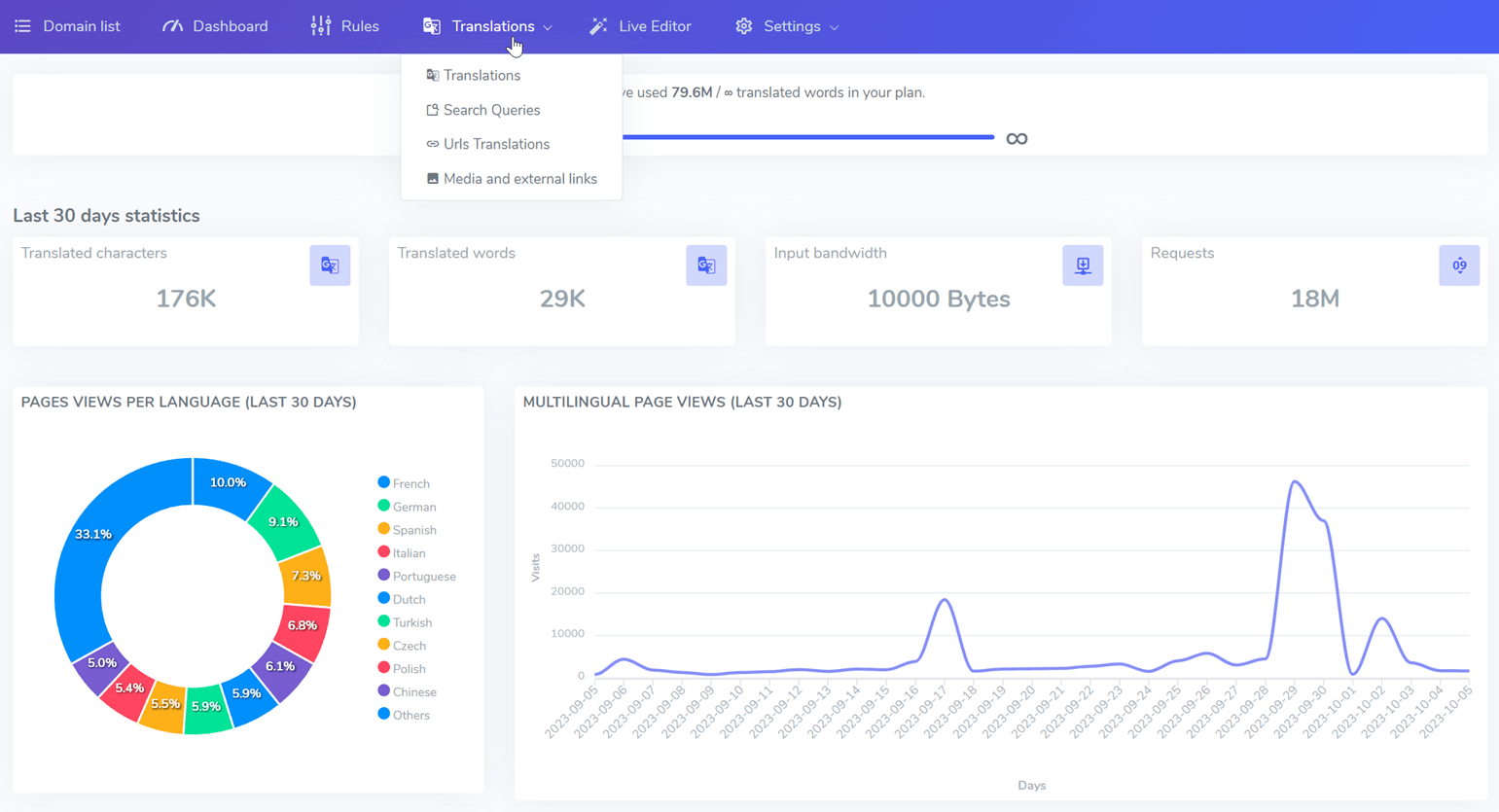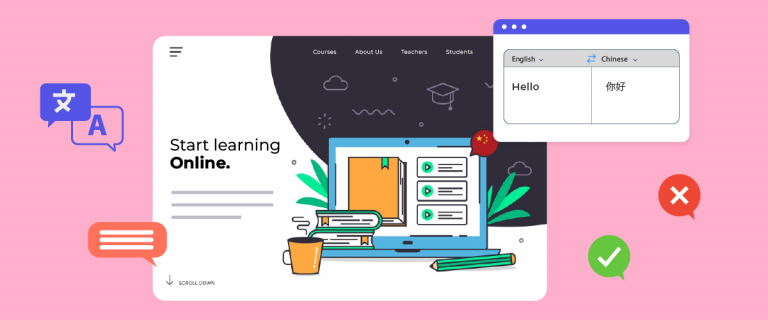It’s important for businesses to have an effective website that can attract potential customers and build stronger relationships. Nowadays, more and more customers rely on websites as their first point of contact, so it’s crucial to prioritize an attractive and user-friendly design and personalization to enhance the customer experience. One aspect of personalization that is often overlooked is language. By offering a multilingual website, companies can attract and engage customers who prefer to browse and interact in their native language, which can make a significant difference.
Creating multilanguage website not only reaches a global audience but also provides a competitive advantage by creating a personalized and inclusive experience. Translating your website content into multiple languages allows you to reach a wider audience and explore new markets. Let’s explore in detail how it can benefit your business.
Market expansion and revenue growth
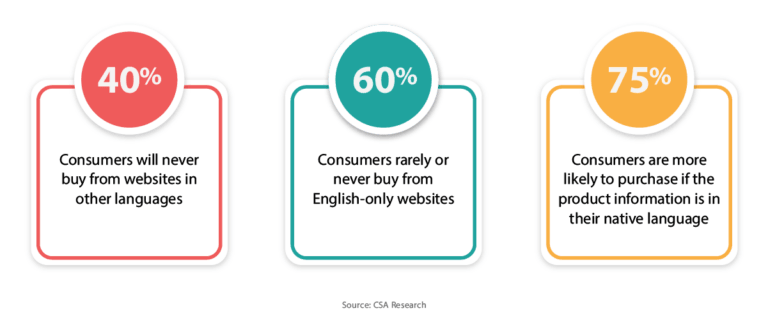
Having a website that supports multiple languages is a important step in broadening your audience and connecting with a significantly larger group of potential customers. While English is the most of usage language web content, accounting for 58.8% of online content, overlooking the remaining 41.2% means potentially missing out on valuable business opportunities.
By integrating various language options into your website, you’re not just enhancing accessibility; you’re also tapping into previously inaccessible market segments. This strategy boosts your visibility and significantly increases your chances of boosting sales and profits. After all, 40% of consumers will avoid purchasing from sites that fail to cater to their linguistic preferences, highlighting the importance of language in consumer decision-making
SEO benefits of multilingual websites
Implementing a multilingual website brings significant advantages in search engine optimization (SEO), crucially enhancing a business’s visibility on the internet. By accommodating multiple languages, companies can broaden their reach, increase traffic, connecting with a more extensive of potential customers across different linguistic backgrounds. This adaptability not only boosts the website’s accessibility but also its chances of being noticed and visited by a global audience.
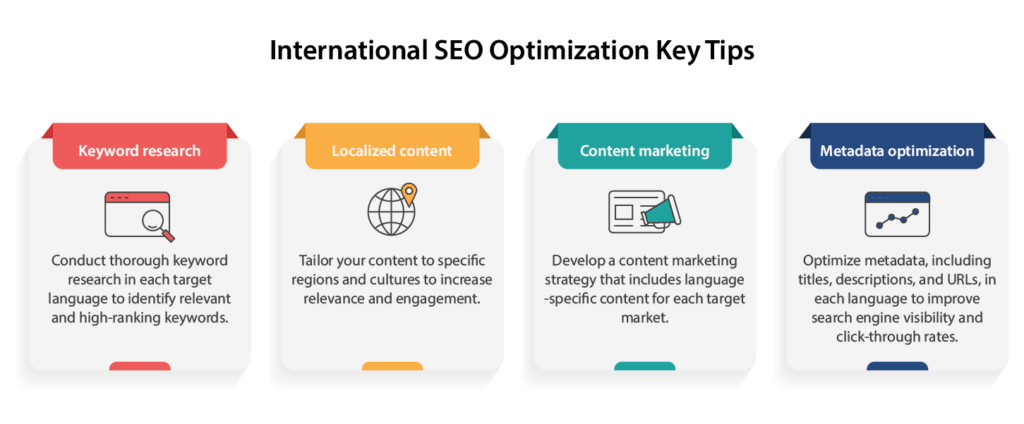
When a business makes its content available in several languages, it allows search engines to index and present its web pages to users conducting searches in those specific languages. This significantly increases the visibility of the business’s website appearing in search results, thereby attracting targeted traffic. Businesses can hone in on particular regions and languages by optimizing their websites for international SEO, substantially improving their standings and visibility on search engine results pages (SERPs). This strategic approach ensures that the website reaches its intended audience effectively.
Enhancing customer experience
Improving the customer experience is one of important part for your businesses aiming to strengthen their relationships with their audience, and language diversity is key to this goal. Provide content in the preferred languages of their customers, businesses not only show respect for individual preferences but also enhance the overall user experience. This approach can lead to a lower bounce rate, as customers are more likely to stay on and explore a website that speaks their language, increasing their satisfaction and loyalty towards the brand.
This is an effective strategy to reduce bounce rates, crucial for keeping visitors engaged and boosting conversions. When customers fully understand the website’s content, their engagement and time spent on the site increase, thereby enhancing the likelihood of converting visits into sales, specially on cart and checkout page, the most important part in online store. Tailoring content to meet the linguistic and cultural expectations of different audiences ensures that visitors find what they’re looking for, significantly improving engagement and overall user satisfaction.
Competitive edge in the global market

A multilingual website offers a distinctive advantage in the global market, enabling businesses to stand out among competitors and significantly widen their reach. This strategic move not only showcases a commitment to inclusivity and accessibility but also positions a business as a global player, ready to connect with diverse audiences. By offering content in most spoken language or multiple languages, businesses can effectively engage with potential customers in their preferred language, enhancing user experience and satisfaction. Not only attracts a broader audience but also demonstrates a deep understanding and respect for cultural diversity.
Expanding into new markets becomes a streamlined process with a multilingual website. It acts as a bridge, eliminating language barriers that often deter potential customers. The ability to communicate in the local language of these new markets ensures that businesses can make a strong first impression, fostering trust and building lasting relationships with their target audiences.
Operational & cost benefits of multilingual web

Implementing a multilingual website offers several operational benefits and cost efficiency for businesses, broadening a business’s reach and enhancing operational efficiency and cost-effectiveness in several ways. Here are some key advantages
- Cost Efficiency & High ROI: Creating a multilingual site is more cost-effective than traditional marketing tactics, reaching a wider audience at a lower cost. This approach leverages the global nature of the Internet, allowing businesses to penetrate markets they would otherwise find costly to enter. Furthermore, the initial investment in translation and localization pays off by significantly increasing the potential customer base, ensuring a higher return on investment than many other marketing strategies.
- Broader Audience: Accessibility in multiple languages opens up new markets, attracting a diverse customer base and potential for growth. By communicating with customers in their native language, businesses can tap into previously unreachable markets due to language barriers. This expansion is not just about numbers; it’s about building a global brand presence and establishing trust in new territories.
- Targeted Marketing: Tailoring content for specific linguistic groups ensures higher engagement and retention rates, boosting marketing success with less expenditure. This targeted approach allows for more personalized marketing efforts, which are more likely to resonate with the intended audience. Moreover, it enables businesses to fine-tune their strategies based on the unique preferences and behaviors of different cultural groups, maximizing the effectiveness of their marketing spend.
Increased trust and brand loyalty
Companies that invest in localization are often viewed as more customer-centric and respectful of cultural differences. This positive brand image can lead to increased loyalty and advocacy among global consumers. Having deep understanding and respect for the cultural nuances, consumer behavior, and preferences across different regions, enabling businesses to significantly widen their appeal and accessibility. Website localization is not just about making a product understandable in another language; it’s about ensuring that it resonates culturally and emotionally with the target audience, making it feel tailored and relevant to their specific context.
Take, for example, the approach adopted by Nintendo in localizing its games and consoles. The company’s strategy involves more than translating text; it extends to adapting character names, cultural references, humor, and even gameplay elements to align with local cultures and sensibilities. Such meticulous attention to detail in localization efforts does more than bridge the linguistic gap—it transforms a product from being perceived as foreign to feeling familiar and engaging, thus deepening market penetration. As a result, Nintendo has not only expanded its global reach but has also fostered a sense of inclusivity, significantly enhancing its brand image and reputation among diverse audiences. This positive perception can lead to increased customer loyalty and advocacy, further propelling brand growth.
What are the challenges of creating a multilingual website?
Creating a multilingual website comes with its challenges, but with careful planning and the right tools, these challenges can be overcome. Here are some key considerations for navigating the challenges of creating a multilingual website:
- Technical challenges: Implementing language-specific functionality, such as language toggles and content translation, can present technical hurdles. However, tools and plugins are available that simplify the process and streamline the technical aspects of managing a multilingual website.
- Content management: Managing content across multiple languages requires a systematic approach. Using a content management system (CMS) that supports multilingual websites can help streamline content creation, translation, and updates.
- Localization: Adapting content to specific regions and cultures requires careful localization. This includes considering language nuances and cultural references and adapting visuals and design to resonate with the target audience.
How to make your website multilingual with Linguise?
If you’re ready to expand your website’s reach by adding multiple languages but are hesitant about the complexities of web development, try Linguise, the tested and compatible with your platform and CMS ( Shopify, WooCommerce, etc.) best plugin WordPress translation for your site.
Simply choose the languages into which you wish your website to be translated, and let Linguise handle the precise translation of your content. After Linguise completes the initial translation process, you can refine your website’s localization efforts through its live editor and you can make adjustments to ensure your translations are spot on.
And there’s more—Linguise not only facilitates your website’s translation but also enhances its SEO performance
Easy dasboard for managed your multi-language website
Improve your multilingual seo
Linguise supports your international SEO efforts and helps you grow your global audience. Here are advantages that you will get:
- Fully compatible with major search engines: Our system has been tested with all major search engines’ webmaster tools, ensuring maximum compatibility and effectiveness.
- Automated multilingual sitemap generation: Keep your site structure clear for search engines in every language with automated sitemap functionality.
- Front-end editing of page title & meta : Easily edit and optimize your page titles and meta descriptions directly from the front-end for each language, enhancing your SEO efforts.
- Automated canonical tags: Efficiently manage canonical tags for multilingual content, preventing duplicate content issues and strengthening your SEO.

